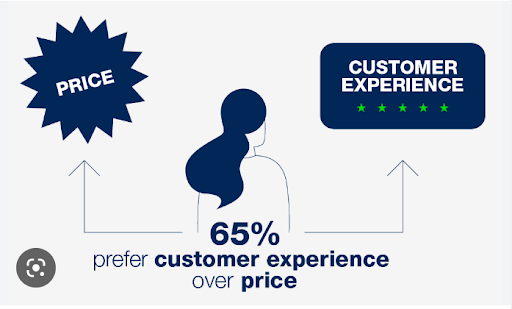








In the world of online commerce, we hear a lot about to how to sell more and earn more. We worry about website design, testimonials, product descriptions and great graphics. We stress about copywriting and customer security and the color of our “buy now” buttons. All of this is important, to be sure, and it all comes down to one thing: creating that elusive “delighted customer.” Yet customer delight isn’t always created on the customer side of the website. There’s one critical element to your customer’s experience that can be made – or broken – before they ever get to your site.
Does happiness matter in business?
Before we get into the technical side of customer delight, let’s talk about the real value of that delighted customer.
As Peter Drucker famously said, “The purpose of business is to create a customer and grow that customer.” So if we look at our marketing and customer acquisition efforts strategically, then the purpose your business should be to build a higher lifetime value (LTV) for your customers. The LTV is basically an estimate of how much you expect a given customer to spend with you over the months or years you do business together. The higher the LTV, the more money you make against the cost of acquiring that customer.
Kissmetrics has a great infographic that helps explain the variables that go into determining your customer LTV:
There are a few different ways to calculate LTV – the simplest is to take your average customer lifespan and multiply that by the average customer revenue per sale. More complex calculations take into account other variables like discounts, profit margins, number of visits per year, etc. No matter how you calculate it, one thing is certain: Customer satisfaction improves lifetime customer value.
Satisfied customers mean less churn, more positive reviews and testimonials, fewer negative comments on social media, and increased stability for your brand and your bottom line. Happy customers means more sales; it seems incredibly obvious when you spell it out like that, but in reality a lot of our marketing and advertising work seems to forget – or at least overlook – this important fact.
How do we know if we are delighting our customers?
Consumers have an ever-widening number of options out there, and brands are increasingly aware of the new standard in customer service. It’s not enough to be “good enough.” We have to strive for excellence, for the best experience possible. And if you don’t, you can bet your competition is.
But how do you know if you’re missing the mark? To quote Bill Gates: “Your most unhappy customers are your greatest source of learning.”
Your unhappy customers have needs that are somehow not being met in their experience with you. This can sometimes be obvious – like a bad product review or a ticket placed with your CS team – but sometimes your most unhappy customers simply walk away and never tell you why. This is especially true in online commerce. Fortunately, those unhappy customers leave plenty of clues as they interac with your brand.
Speed – the defining factor for mobile happiness
If you really want to know what’s going on “under the hood” in terms of customer satisfaction, your site analytics are a great place to start.
“Your site stats are really important for showing the value of your site to your customer,” explains Duda CEO Itai Sadan. “For example, you can look at bounce rates, engagement analytics, and page visits to really see where they are interacting with your brand, and where they are leaving.”
Looking at engagement stats, for instance, can help you understand which pages are triggered the most, and which are not popular, Itai epxlains. This can help you design better sites and better marketing campaigns to drive better traffic. Or if you find that a particular page has a high bounce rate, you can look for design problems, irrelevant copy or other problems that might be turning your visitors off.
There’s one other thing that your site data can show you about your customer journey. What customers really want in their online experience with your brand is speed. And that, according to Sadan, is why Duda has reengineered their site building platform to be fully optimized for speed from the ground up.
If you don’t make that three second mark, it doesn’t matter how good your products are, or how friendly the customer support team is. It doesn’t matter, because your visitor won’t stick around long enough to learn anything about your company. And if they don’t stick around, there’s no way you can delight them.
On the other hand, when you site is optimized for maximum page speed, the entire experience feels different. It welcomes you in. It gives you a sense that the brand actually values your time and appreciates you. It’s the basis on which a solid customer relationship can grow.
“Optimizing for page speed – even if you change nothing else – will immediately have an impact on your customer’s happiness level,” explains Sadan. Faster speed means higher engagement and a better user experience – and that will mean everything to your bottom line.








